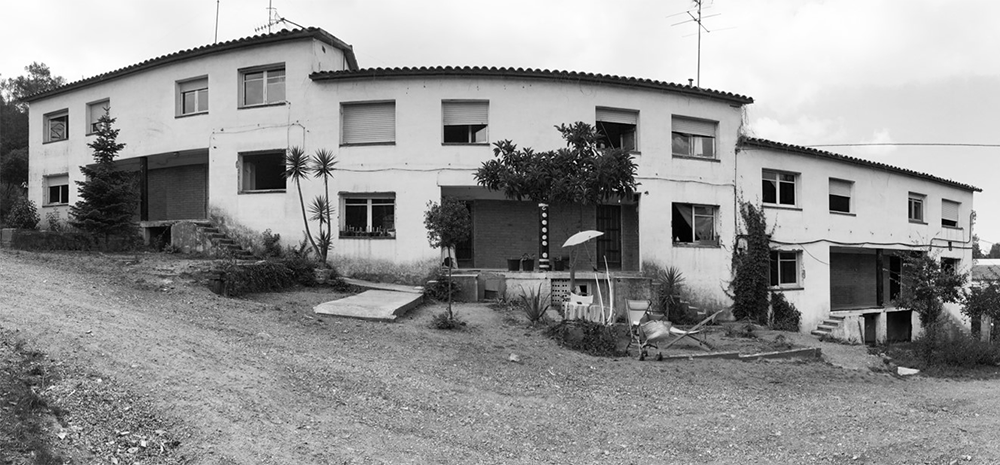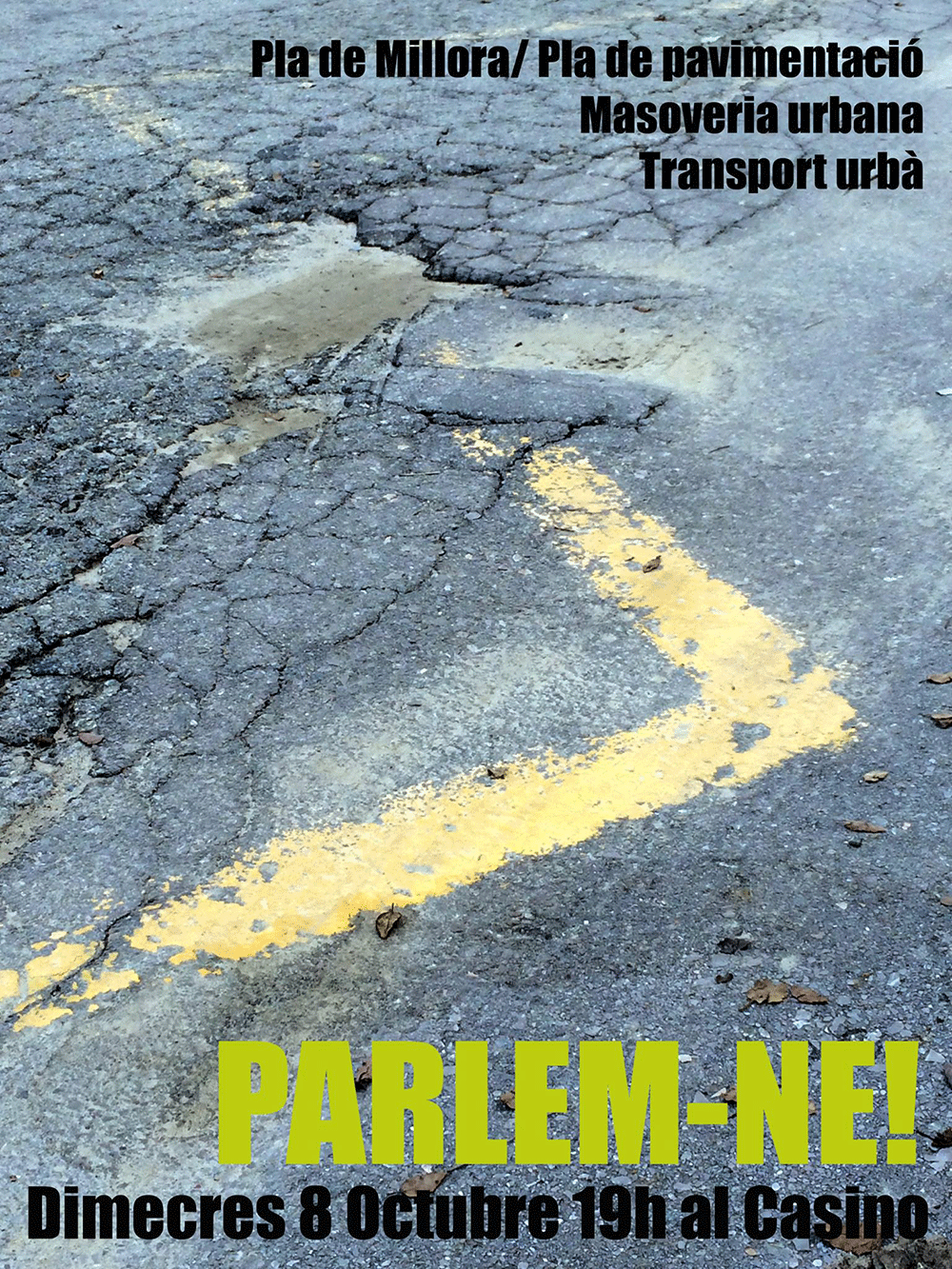As a result of our involvement in local movements to improve the neighbourhood of La Floresta, in 2014 we helped manage La Foresta Speaks, a neighbourhood platform for dialogue structured around shared concerns and initiatives of interest to all, transcending individual issues.
Part of the residents’ motivations and aspirations for the neighbourhood of La Floresta arose from the strain and ecological implications of living within Collserola Park. So, the detonator for La Floresta Speaks was the Municipal Paving Plan to combat dust and mud, which set out to spend €2.5 million to asphalt tracks and roads, waterproofing nine hectares of land. This plan polarised the neighbourhood, mobilising people on both sides. On the one hand, there were groups like Los árboles hablan (The Trees Speak), 15-M, etc. that aimed to defend the natural environment. And, on the other, a group of neighbours who had lived in the area for 40-50 years, with mortgages, who wanted the asphalt.
In response to the platform, the City Council presented a new document, the Plan to Improve La Floresta, which was based on a project drafted in 2013 by the Barcelona Metropolitan Area. The document gave a simple overview of the current state of La Floresta, highlighting the urban idiosyncrasy of the neighbourhood with regard to its natural environment and proposing criteria on which to base a Local Mobility Plan.
In light of the opportunity to lay down in this new plan better technical and environmental solutions for the situation and resident participation, a dialogue began and gatherings were held at the Casino that turned into a spontaneous participation process full of hope. These gatherings fuelled the neighbours’ ambition and the declaration, which had become “What kind of La Floresta do we want?”.
How could we bridge the communication gap between plans and non-architects?
“La Floresta Grand Tour” was an educational exercise, to communicate the urban reading with accessible language. It showed that the tracks affected by the plan, the ones it set out to asphalt, were the ones remaining to be paved, the ones left near the park, closer to the gateways, the cul-de-sacs, the ones further out and not connected to the basic road network, the more domestic ones, the ones in contact with most of the passageways and staircases.
One thing that makes La Floresta unique is how it turns you around, losing your sense of direction, and the fact that it is located on the line between urban space and a natural park. The platform became aware of being a little piece of urbanity infiltrated in the park. Little by little, the gatherings moved towards a dialogue that agreed on the asphalting, but with a few conditions: it would have to take into consideration the torrents and run-off. La Floresta is a space on the edge; many of its streets end in a cul-de-sac, showing that the urban medium is finite. La Floresta is a neighbourhood that can be reached through many gateways. Some intersections show signs of being squares, poorly designated as meeting places.
It is clear, then, that the project wouldn’t just be urban development. The platform decided to change its declaration: it wouldn’t be about asphalting, but about re-appropriating certain areas (inverted prioritisation) and taking care in the contact with the gateways (squares) and passageways (staircases). It proposed a technology that brought about a pact with the world of infrastructure: small, permeable bands, asymmetrical pavements.
How to co-produce the project.
We drafted a project as the basis for the tender the Metropolitan Area was going to launch. This proposal laid out a series of criteria and offered up a manual of attitudes: implement inverted priority, adapt the route to the various widths, be asymmetrical to reflect the difference between the forest side and the urban side, try to be permeable, etc. The project established prioritisation criteria for the paving process, defining a series of variables that ranked the priorities by their urgency.
Despite these collective efforts, the document that ended up being used as the basis for the tender didn’t include the goals laid out in the manual, either in terms of participation or respect for the park. Nevertheless, the manual has been useful in a sense, the project shows the difficulties of participation and highlights the government’s apathy.



